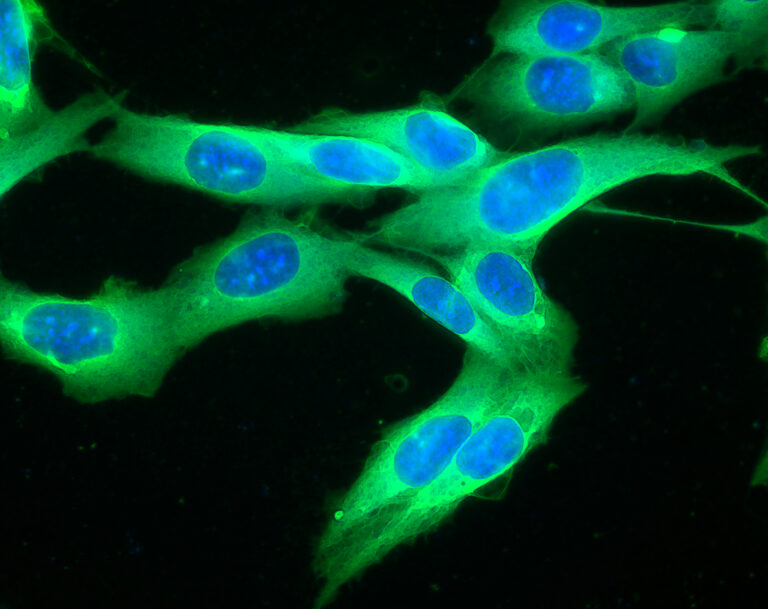- FILTERS Advanced
- Product Type
- Clonality
- Application
- Species / Reactivity
- Source / Host
- Conjugation
- CE / IVD
- Clone ID
- Supplier
- EXCLUDE FILTERS
- Product Type
- Clonality
- Application
- Species / Reactivity
- Source / Host
- Conjugation
- Clone ID
| Name | Art no | Species Reactivity | Application | Conjugation | Size | Price |
|---|---|---|---|---|---|---|
|
609-604-213
|
human
|
|
Alexa Fluor 647
|
0.1 mg
|
||
|
128-007-232
|
mammals
|
|
Unconjugated
|
0.25 mg
|
||
|
109-405-170
|
human
|
|
Gold
|
1 ml
|
||
|
016-400-084
|
|
|
Gold
|
1 ml
|
||
|
300-055-240
|
synthetic
|
|
AP
|
0.1 ml
|
||
|
300-065-240
|
synthetic
|
ELISA, FC, ICC, IHC, WB
|
Biotin
|
0.1 ml
|
||
|
300-625-240
|
synthetic
|
IF, FC
|
Alexa Fluor 680
|
0.1 mg
|
||
|
303-405-003
|
chicken
|
|
Gold
|
1 ml
|
||
|
128-007-230
|
mammals
|
|
Unconjugated
|
0.25 mg
|
||
|
128-547-230
|
mammals
|
IF, FC
|
Alexa Fluor 488
|
0.25 mg
|
||
|
128-547-232
|
mammals
|
IF, FC
|
Alexa Fluor 488
|
0.25 mg
|
||
|
128-167-230
|
mammals
|
IF
|
Cy3
|
0.25 mg
|
||
|
009-400-003
|
|
|
Gold
|
1 ml
|
||
|
609-544-213
|
human
|
|
Alexa Fluor 488
|
0.1 mg
|
||
|
615-544-214
|
mouse
|
|
Alexa Fluor 488
|
0.1 mg
|
||
|
611-164-215
|
rabbit
|
|
AMCA, Cy3
|
0.1 mg
|
||
|
209-032-241
|
human
|
|
HRP
|
0.5 ml
|
||
|
003-580-003
|
|
|
Alexa Fluor 594
|
1 mg
|
||
|
005-130-003
|
|
IF, FC
|
APC
|
0.5 ml
|
||
|
002-000-003
|
|
|
Unconjugated
|
10 mg
|
||
|
009-060-050
|
|
|
Biotin
|
1 mg
|
||
|
009-540-006
|
|
IF, FC
|
Alexa Fluor 488
|
1 mg
|
||
|
009-160-006
|
|
IF
|
Cy3
|
1 mg
|
||
|
009-030-011
|
|
|
HRP
|
1 mg
|
||
|
012-470-003
|
|
IF, FC
|
DyLight 405
|
1 mg
|
||
|
012-060-003
|
|
|
Biotin
|
1 mg
|
||
|
011-000-001
|
|
Block
|
Unconjugated
|
2 ml
|
||
|
009-540-007
|
|
IF, FC
|
Alexa Fluor 488
|
1 mg
|
||
|
009-060-012
|
|
|
Biotin
|
1 mg
|
||
|
009-540-012
|
|
IF, FC
|
Alexa Fluor 488
|
1 mg
|
||
|
013-000-002
|
|
Block
|
Unconjugated
|
10 mg
|
||
|
009-060-051
|
|
|
Biotin
|
1 mg
|
||
|
009-600-008
|
|
IF, FC
|
Alexa Fluor 647
|
1 mg
|
||
|
012-030-050
|
|
|
HRP
|
1 mg
|
||
|
011-000-052
|
|
|
Unconjugated
|
5 ml
|
||
|
009-030-007
|
|
|
HRP
|
1 mg
|
||
|
706-626-148
|
guinea pig
|
IF, FC
|
Alexa Fluor 680
|
0.3 mg
|
||
|
109-115-190
|
human
|
IF, FC
|
PE
|
1 ml
|
||
|
711-405-152
|
rabbit
|
|
Gold
|
1 ml
|
||
|
109-136-190
|
human
|
IF, FC
|
APC
|
0.5 ml
|
||
|
109-546-190
|
human
|
IF, FC
|
Alexa Fluor 488
|
0.75 mg
|
||
|
305-006-008
|
goat
|
|
Unconjugated
|
1 mg
|
||
|
304-155-003
|
dog/canine
|
IF
|
AMCA
|
1.5 mg
|
||
|
304-295-008
|
dog/canine
|
IF
|
Rhodamine
|
1.5 mg
|
||
|
304-475-008
|
dog/canine
|
IF, FC
|
DyLight 405
|
1 mg
|
||
|
305-095-047
|
goat
|
IF, FC
|
FITC
|
1 mg
|
||
|
305-055-046
|
goat
|
ELISA, WB
|
AP
|
0.5 ml
|
||
|
712-035-150
|
rat
|
ELISA, ICC, IHC, WB
|
HRP
|
0.5 ml
|
||
|
712-066-150
|
rat
|
ELISA, FC, ICC, IHC, WB
|
Biotin
|
0.3 ml
|
||
|
709-475-149
|
human
|
IF, FC
|
DyLight 405
|
0.5 mg
|

Advancing Multiplexing in Immunofluorescence with Specific Secondary Antibodies from Jackson ImmunoResearch
Cells employ millions of proteins to perform cellular function. Thanks to the advance microscope techniques, we can visualize them by employing antibodies that specifically detects the protein of interest. Spatial proteomics have increased our understanding of protein localization in time and space thereby shedding lights on to its function in health, ageing and diseases.